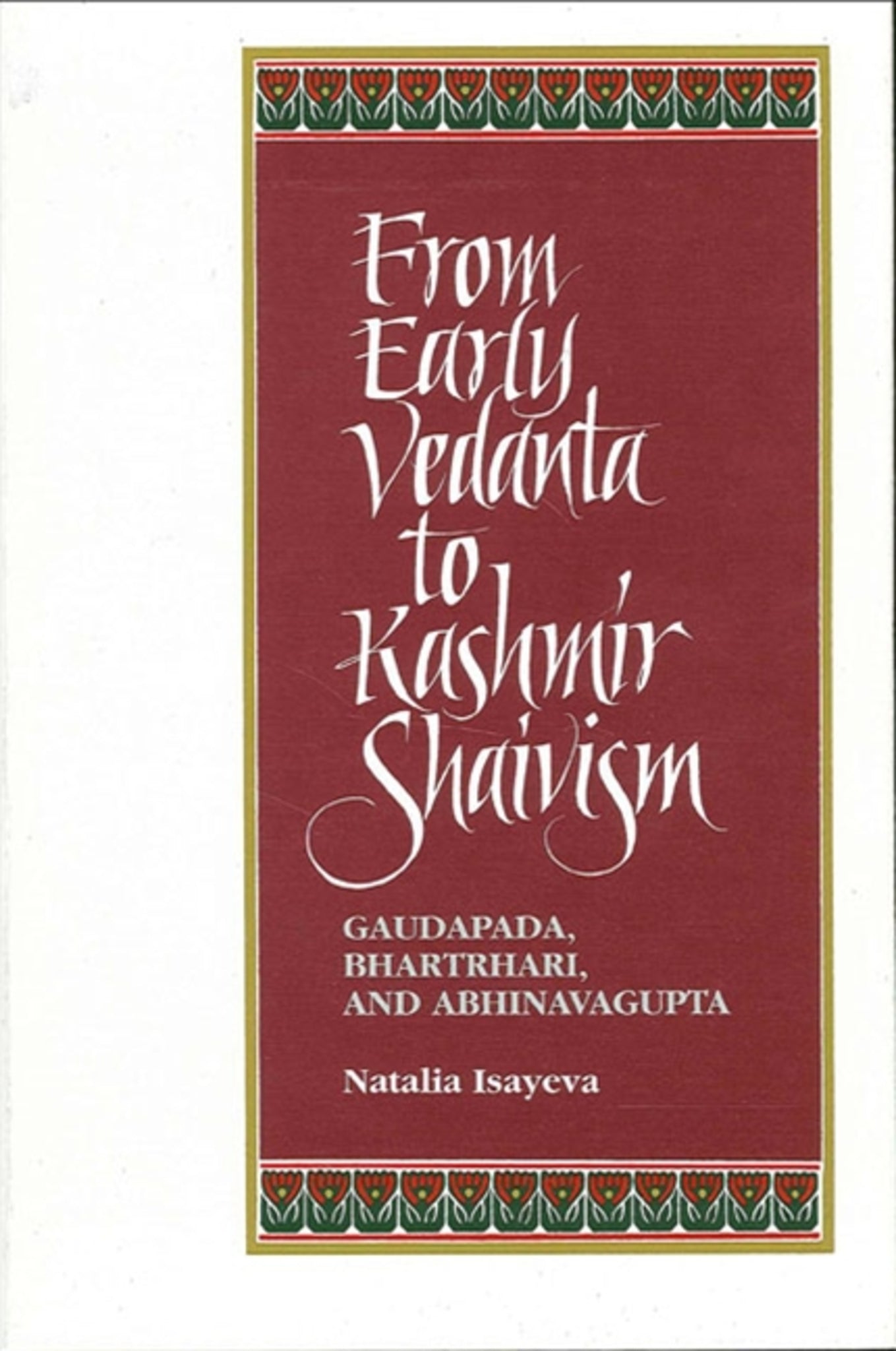We're sorry. An error has occurred
Please cancel or retry.
From Early Vedanta to Kashmir Shaivism

Some error occured while loading the Quick View. Please close the Quick View and try reloading the page.
Couldn't load pickup availability
- Format:
-
01 July 1995

Clarifies the relationship between God and the creation for Gaudapada, Bhartrhari, and Shankara, and by doing so, demonstrates a major continuity of thought from Gaudapada through Bhartrhari to Abhinavagupta and Kashmir Shaivism.
This book deals with one of the most interesting periods in the development of Indian religious and philosophical traditions. Starting with the teaching of the proto-vedantist philosopher Gaudapada, and then analyzing the ideas of his famous contemporary, the grammarian Bhartrhari, the author suggests an entirely new approach to the whole history of vedanta.
Gaudapada and Bhartrhari are presented as founders of an independent trend within Indian orthodox philosophy, a trend that culminates later in the theistic tenets of Kashmir Shaivism. Isayeva shows that, in contrast to SAankara, early vedantist philosophers regarded the higher Brahman as a kind of continuous reverberation of a peculiar phonic energy that was ever producing the same constantly renewable structures and patterns of the universe. This idea found its continuation in the metaphysical and aesthetical concepts of Abhinavagupta, where the ultimate ontological reality is manifested through the rhythmical outbursts of God's creative power.


"The relationship between Gaudapada, Bhartrhari, and Shankara has never been given the in-depth exploration that Isayeva offers. Her analysis demonstrates a major continuity of thought from Gaudapada through Bhartrhari to Abhinavagupta and Kashmir Shaivism, a line hinted at by others but never analyzed in depth.
"Reading this book led to several 'aha' moments for me, as hunches I have had for many years were given detailed analysis and confirmation. But my eyes were opened as well to a new way of seeing the development of Indian philosophy during the crucial period of 500-1000 A.D. The author's bringing together of Gaudapada and Bhartrhari is a major step forward in scholarship." — H. G. Coward, University of Victoria
Acknowledgments
Introduction
Note on Sources
Part I Gaudapada The Mind and the Cosmos: Reflection or Prototype?
1. Gaudapada : Life and Works
2. Mandukya-karika : The Gradations of Consciousness
3. Mandukya-karika: The Illusory World and the Problem of Creation
4. Mandukya-karika: TheShimmering of Cosmos
Part II Bhartrhari Speech andthe World: Creation or Expression?
5. Bhartrhari
6. Vakya-padiya
7. Manifestations of Speech
8. Language and Being
9. The Structure of the Universe and the Place of Man
Part III Further Developments: The Interplay of Energies and Artistic Creation
10. Early Vedanta and Kashmir Saivism
11. The Concept of Energies: Neoplatonist and Hesychast Parallels
12. Abhinavagupta's Aesthetics
The Name and the Voice: Some Concluding Unscientific Remarks
Index



